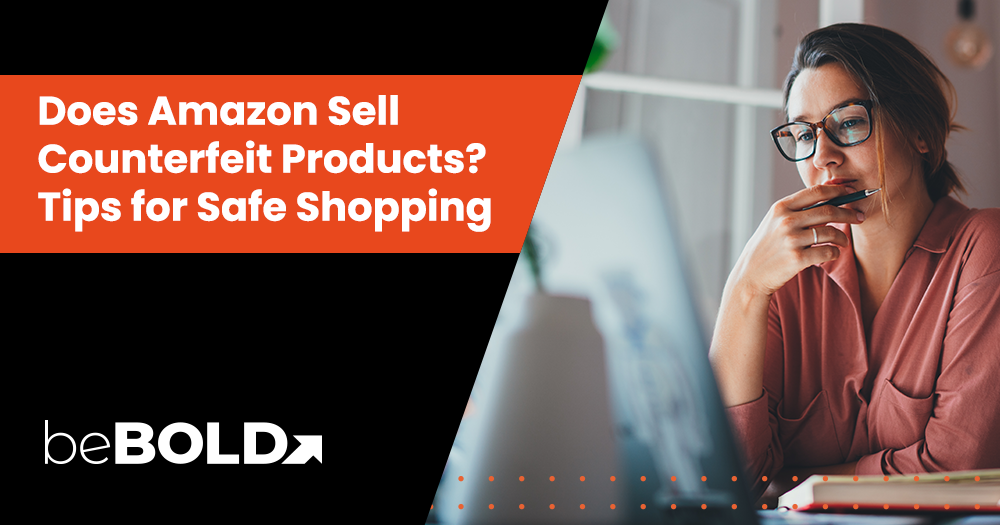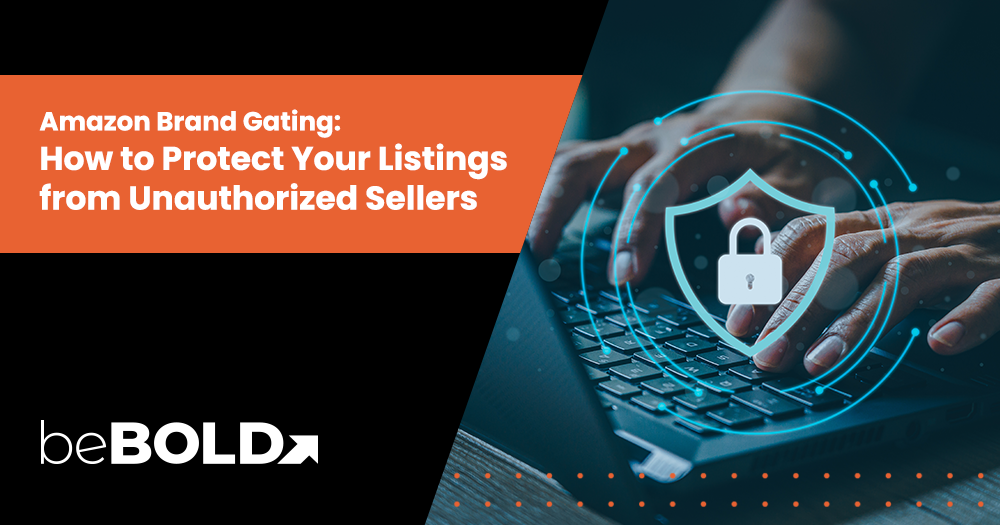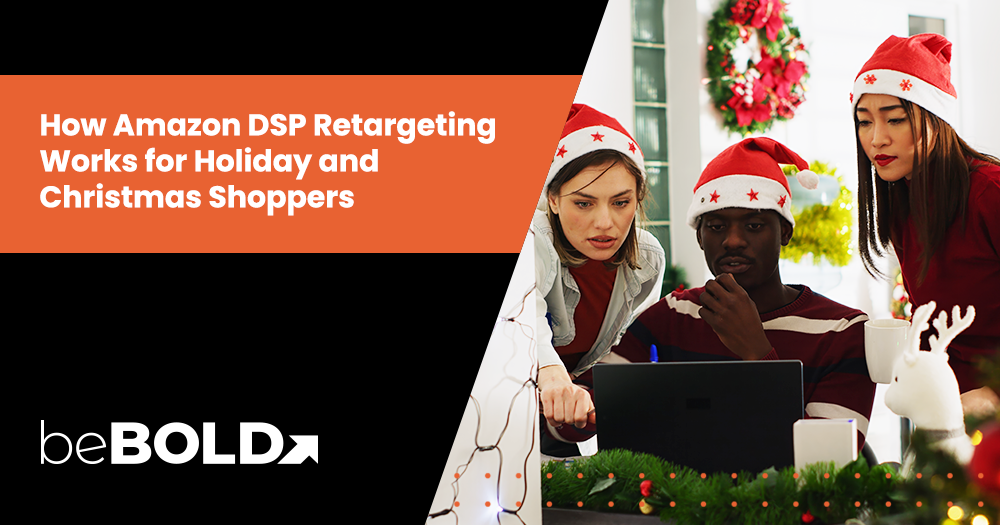Key Highlights
- Amazon’s massive online marketplace occasionally exposes buyers to counterfeit products sold by third parties, posing risks to consumer trust.
- To address this issue, Amazon established a specialized Counterfeit Crimes Unit (CCU) to target bad actors and counterfeit goods aggressively.
- Features like the Brand Registry and cutting-edge machine learning technology help safeguard intellectual property rights and foster safer online shopping.
- Customer reviews and seller ratings act as preliminary indicators to identify suspicious counterfeit items.
- Consumer vigilance and comprehensive anti-counterfeiting measures are essential for preventing the sale of counterfeit goods.
- Amazon collaborates with law enforcement agencies globally to protect brands and intellectual property effectively.
- Don’t just survive on Amazon; thrive with beBOLD Digital’s anti-counterfeit expertise.
Yes, Amazon does sell counterfeit products—but not intentionally. Despite investing billions in anti-counterfeit measures, the platform’s massive third-party marketplace means some fake items still make it through. These counterfeits often mimic popular brands using unauthorized logos, packaging, or designs to trick shoppers into thinking they’re buying the real thing. In this blog, we’ll break down what qualifies as a counterfeit on Amazon, the risks they pose, how Amazon is fighting back, and the smartest ways to shop safely and avoid getting duped.

Amazon takes counterfeiting extremely seriously, enforcing a strict zero-tolerance policy. Selling fakes can result in:
- Amazon seller’s account being suspended or permanently banned
- Listings being removed
- Inventory being seized or destroyed
- Triggering legal action or criminal prosecution.
The platform’s mission is clear: to protect customers sand brands by ensuring only authentic products are sold and swiftly shutting down anyone caught trafficking in fake goods.
Selling Counterfeit Goods on Amazon? Here’s What You Risk
Selling fakes on Amazon isn’t just risky; it’s business suicide. Amazon takes counterfeits seriously, and the penalties are steep:
- Account Suspension or Shut Down: One strike, and your seller account could be gone for good.
- Product Listings Removed: Counterfeit flagged? It’s pulled instantly, and you won’t be able to relist.
- Inventory Destroyed: Fake goods in Amazon’s warehouses? Say goodbye, they’ll be trashed, not returned.
- Legal Trouble: You could be sued by the brand or even Amazon itself.
- Reputation Wrecked: Even one complaint can tank your reviews and destroy buyer trust.
Bottom line: sell legit, or don’t sell at all. It’s not just about staying on Amazon: it’s about staying in business.
The Impact of Counterfeit Sales on Consumers and Brands
Counterfeit products aren’t just a minor annoyance; they can cause real harm to both shoppers and the brands you trust. Here’s how the damage adds up for everyone involved:
How Counterfeits Harm Consumers:

- Poor Quality: Fakes often break easily, don’t work as promised, or look nothing like the real thing.
- Safety Risks: Counterfeit electronics, cosmetics, and medicines can pose significant hazards, including fire risks, allergic reactions, and toxic ingredients.
- No Support: With most counterfeit goods, forget about warranties, returns, and customer service.
How Counterfeits Hurt Brands:

- Lost Revenue: Every fake sold is a loss of revenue for the real brand.
- Damaged Reputation: Customers often blame the brand when counterfeit products fail to meet expectations or cause harm.
- Erosion of Trust: The proliferation of counterfeits can make shoppers wary of purchasing genuine products.
- Costly Battles: Brands spend millions fighting fakes and repairing their image.
Amazon’s Measures to Combat Counterfeits
Amazon has rolled out a multi-layered defense system to tackle counterfeits, blending cutting-edge tech, brand empowerment, and global enforcement. Here’s how the platform is fighting back and what it means for consumers and brands.
Review of Amazon’s Anti-Counterfeiting Policies
Amazon has launched several powerful programs to keep fakes off its shelves. This includes:
- Brand Registry: Provides brands with the tools to identify and report counterfeits, enabling Amazon to remove fake listings and protect intellectual property quickly.
- Project Zero: Here, the Amazon counterfeit policy lets trusted brands instantly delete counterfeit listings themselves while Amazon’s AI scans millions of products daily to block fakes before they’re seen.
- Transparency Program: Adds unique codes to products, allowing Amazon and customers to verify authenticity. If the code doesn’t match, the product will not ship.
- AI-Powered Detection: Amazon’s automated systems work around the clock, using machine learning to flag suspicious products and sellers before shoppers ever see them.
- Zero-Tolerance Enforcement: Sellers caught listing counterfeits face swift bans, product destruction, and even legal action.
The Role of Amazon's Counterfeit Crimes Unit (CCU)
Amazon’s CCU is the marketplace’s anti-fake SWAT team. It helps with:
- Tracks Down Fakes: Uses AI to spot shady sellers and investigate counterfeit rings worldwide.
- Works With Law Enforcement: Teams up with police and brands for raids, arrests, and legal action across the globe.
- Holds Offenders Accountable: Bans, sues, and helps prosecute counterfeiters while also seizing and destroying millions of fake products every year.
Steps to Take if You Receive a Counterfeit Item
Receiving a counterfeit product on Amazon can be frustrating, but Amazon provides clear instructions on how to report the issue and protect yourself. Knowing how to act quickly helps you obtain a refund or replacement while also assisting Amazon in cracking down on fake sellers.
How to Report Counterfeit Products to Amazon?
If you suspect you’ve received a counterfeit item, start by using Amazon’s reporting tools. Then:
- Firstly, Identify the Counterfeit Product on the PDP. Check for mismatched branding, poor-quality images, or misleading product descriptions. If the item seems suspicious, it might be counterfeit.
- Next, log in to your account and navigate to the “Report Infringement” form specific to your region (for example, amazon.com/report/infringement for the U.S.).

- Here, you’ll select “Trademark concerns,” i.e, trademarks, copyrights, or patents, and specify that the product is counterfeit.

- Providing detailed information, such as order details, images of the fake product, and proof of brand ownership (if applicable), helps Amazon verify your claim and take swift action.

- Once your report is submitted, Amazon will investigate and take action, which could include removing the counterfeit product or suspending the seller’s account.
- Customers who aren’t brand owners can also contact Amazon Customer Service directly to flag counterfeit items and initiate an investigation.
Refunds and Replacements: Navigating Amazon’s Policies

Amazon’s A-to-Z Guarantee protects buyers who receive counterfeit or misrepresented products from third-party sellers. If the seller doesn’t resolve the issue, you can file a claim within 90 days of delivery to request a full refund.
The process is straightforward:
- Go to “Your Orders,” select the problematic item, and submit an A-to-Z claim explaining the counterfeit issue.
- Amazon typically investigates within a week and often sides with the buyer if the evidence is clear and convincing.
- Additionally, Amazon’s return policies allow you to send back counterfeit items using prepaid return labels, and refunds are usually processed within 2–3 weeks, sometimes faster for Prime members.
- Acting promptly not only safeguards your money but also helps remove counterfeit listings from the marketplace.
Proactive Shopping: How to Avoid Buying Counterfeits

Staying one step ahead of counterfeiters is the best way to shop smart on Amazon. With a few proactive habits, you can dramatically lower your risk of ending up with a fake.
1. Trusted Sellers and Brand Registry

Always look for products sold by “Amazon Verified” sellers or brands that are part of the Amazon Brand Registry; these sellers have gone through extra verification steps, making fakes far less likely. Official brand pages (such as Nike or Apple) often feature a blue checkmark or a “Sold by [Brand Name]” label, and you’ll find consistent branding, professional images, and clear contact information.
For even more confidence, check out screenshot examples of these official seller pages so you know exactly what to look for before making a purchase.
2. Checking Seller Information and Ratings

When shopping, always check the seller’s profile and ratings. Click the seller’s name to view their history and discover what else they’re offering. Reputable sellers typically have a high percentage of positive feedback and a consistent sales record.
Besides, products marked “Fulfilled by Amazon” are generally safer bets since Amazon handles the shipping and customer service. Lastly, watch out for sellers with vague descriptions, a random mix of products, or numerous negative reviews, as these can be red flags for counterfeit items.
3. Understanding Reviews and Feedback for Authenticity Clues

Reviews are another goldmine for spotting fake reviews and fakes, but they require a sharp eye. Be wary of products that receive a sudden surge of glowing five-star reviews, especially if they use generic language or appear in bulk over a short period.
Authentic reviews mention both pros and cons, include specific details, and come from “Verified Purchases.” Check reviewer profiles to see if they only review one product or sound repetitive, be cautious. For extra confidence, use tools like Fakespot or ReviewMeta to spot fake reviews.
4. Educating Yourself on Product Specifics
A little research goes a long way. Compare product images, descriptions, and specifications on Amazon with those on the official brand website, and watch for mismatched logos, unusual packaging, or missing features.
If something looks off, trust your gut and dig deeper. Reading up on common counterfeit signs for your chosen product and even checking unboxing videos or reviews from trusted sources can help you spot red flags before you spend a single rupee.
beBOLD Tip: Selling items that might qualify as hazmat? Make sure you’re covered by reading our guide to the Amazon Dangerous Goods Program.
Protect Your Brand on Amazon with beBOLD Digital’s Expertise
Are you tired of seeing copycats undermine your brand’s hard-earned reputation on Amazon? That’s where beBOLD Digital comes in. As Amazon brand protection and marketplace growth specialists, beBOLD helps brands safeguard their reputation, monitor for fakes, and leverage tools like the Brand Registry and the Transparency Program to keep counterfeits away.
Our team handles everything from spotting suspicious listings and reporting violators to optimizing your product pages for authenticity and conversions.
Whether you’re a new seller or an established brand, beBOLD Digital’s proactive strategies ensure your customers get the real deal, so you can focus on growing your business with confidence. Ready to protect your brand and boost your success on Amazon? Book a free consultation with beBOLD Digital and take the first step toward a counterfeit-free marketplace.
Conclusion
If you're still wondering does Amazon sell fake items, know shopping on Amazon opens up a world of choice and convenience, but it also means being vigilant about the risk of counterfeits. By understanding what counterfeit products look like and how Amazon works to fight them, you’re already ahead of the game.
Remember to check seller ratings, dig into positive reviews, and trust only reputable, verified sellers. Do your homework on the products you want, and don’t hesitate to walk away if something feels off.
Being proactive is your best defense. Every time you shop, take a moment to double-check details and buy from the official brand pages whenever possible.
Frequently Asked Questions
What should I do if I suspect a product is counterfeit after I have purchased it?
If you suspect you have purchased counterfeit products on Amazon, follow these steps. Take pictures or notes about the item as proof of its existence. Report the counterfeit items to Amazon using their website or app. Request a refund or replacement and provide the necessary evidence. When you report, you help Amazon remove counterfeit items and keep others safe in the future.
How can I differentiate a counterfeit product from an authentic one on Amazon?
To spot fake products, review the seller's details and verify the authenticity of the reviews. Have a look at the product images as well. Verify if the logos or photos require any minor adjustments or corrections. If you read the product descriptions and feedback, you can find clues about whether it is real. Making these efforts helps you make better choices when purchasing something.
Are there specific product categories more vulnerable to counterfeits on Amazon?
Categories such as luxury goods, electronics, cosmetics, and branded clothing are among the primary targets of counterfeiters. People need to be cautious when purchasing these high-priced items. Before making a purchase, consider reviewing the registered trademarks, reading customer feedback, and verifying the seller’s credentials.
Where is the Amazon Counterfeit Crimes Unit (CCU) available?
Amazon’s Counterfeit Crimes Unit operates globally, with dedicated teams in the U.S., Europe, and China. The CCU partners with brands, law enforcement, and investigators to take down counterfeit networks and protect intellectual property.
What is Amazon’s Anti-Counterfeiting policy?
Amazon strictly prohibits the sale of counterfeit products. Sellers must only list authentic goods and may face account suspension, legal action, or inventory disposal if found violating this policy.
What is Amazon Associates’ Anti-Counterfeiting Policy?
Amazon Associates are not allowed to promote or link to counterfeit products. Participation in the program requires compliance with Amazon’s policies, and violations can lead to removal from the Associates program.
Don’t let fakes steal your sales; connect with beBold Digital and protect your Amazon business now!










Comments